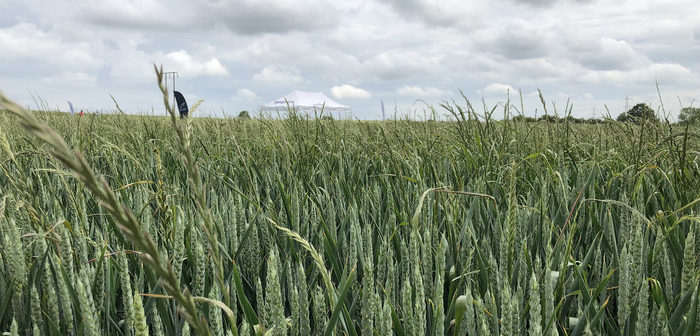Investing more in the pre-emergence herbicide programme is key to controlling ryegrass and preventing problems spreading further.
Results of this season’s trials at the Syngenta Ryegrass Focus Site have shown increasing rates of Defy, from 4.0 to 5.0 l/ha, in the pre-emergence treatment further boosted reduction of ryegrass heads by an average 36% across plots of wheat, barley and hybrid barley.
Trials site manager and grass weed specialist, Andy Cunningham, advocates reducing viable seed head numbers is crucial to preventing seed return and maintaining sustainable low weed populations.
The higher rate of Defy, as the base treatment in a tank-mix with flufenacet, reduced head numbers on the Yorkshire trials site as low as eight per m2in conjunction with hybrid barley, compared to over 350 heads in untreated plots of wheat and 168 heads in conventional barley.
Analysis of the in-crop ryegrass had shown an average 32 seed per head standing above the crop, equating to a return of more than 10,000 seeds per m2in untreated wheat, but down to 220 seeds returned with the higher rate of Defy in combination with hybrid barley.
A recently published survey of growers* has shown over 60% of UK growers have a problem with ryegrass issues on their farms, with a third reporting the situation is getting worse. The survey showed that 64% of growers do specifically select herbicide options to target ryegrass on affected areas.
The results revealed pre-emergence herbicides were performing more effectively (56% good or highly effective) compared to post-emergence treatments (32%).
Whilst ryegrass has typically been viewed as the lesser problem to black-grass, it can be both more competitive to cereal crop yield and is getting increasingly difficult to control, warns Andy Cunningham.
“The herbicide trials have given a clear insight into practical strategies for growers,” he advised. “Focus on the pre-emergence treatment can provide more robust control, particularly where soil conditions and rainfall trigger the most effective results.”
The additional benefit of using the higher rate of Defy as the base of stacked herbicide programmes was highlighted by the pre-em tank-mix combination averaging 70% more effective than flufenacet alone.
Andy also urged growers and agronomists to look closely at the numbers of ryegrass heads within the crop, compared to those poking up above. His work shows weed tillers suppressed below the crop are typically less viable than those above – producing on average 23 seeds per head, compared to 32.
“The competiveness of hybrid barley has been highly successful in reducing both overall numbers of ryegrass heads, and suppressing the viability of weed tillers to produce seeds. When that’s combined with the more robust pre-emergence application, there is the real chance to significantly reduce ryegrass seed numbers,” he advised.




